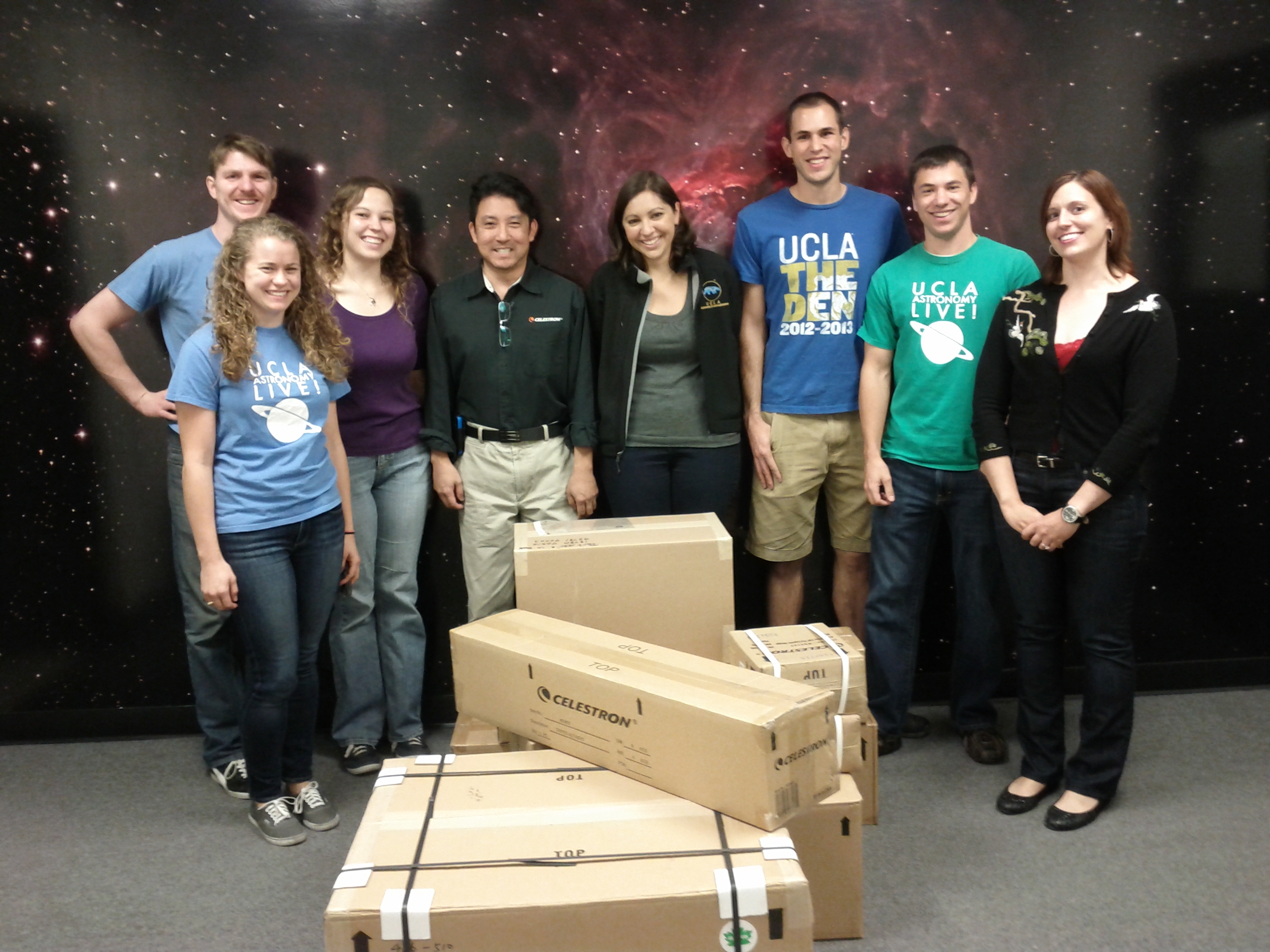Planetarium
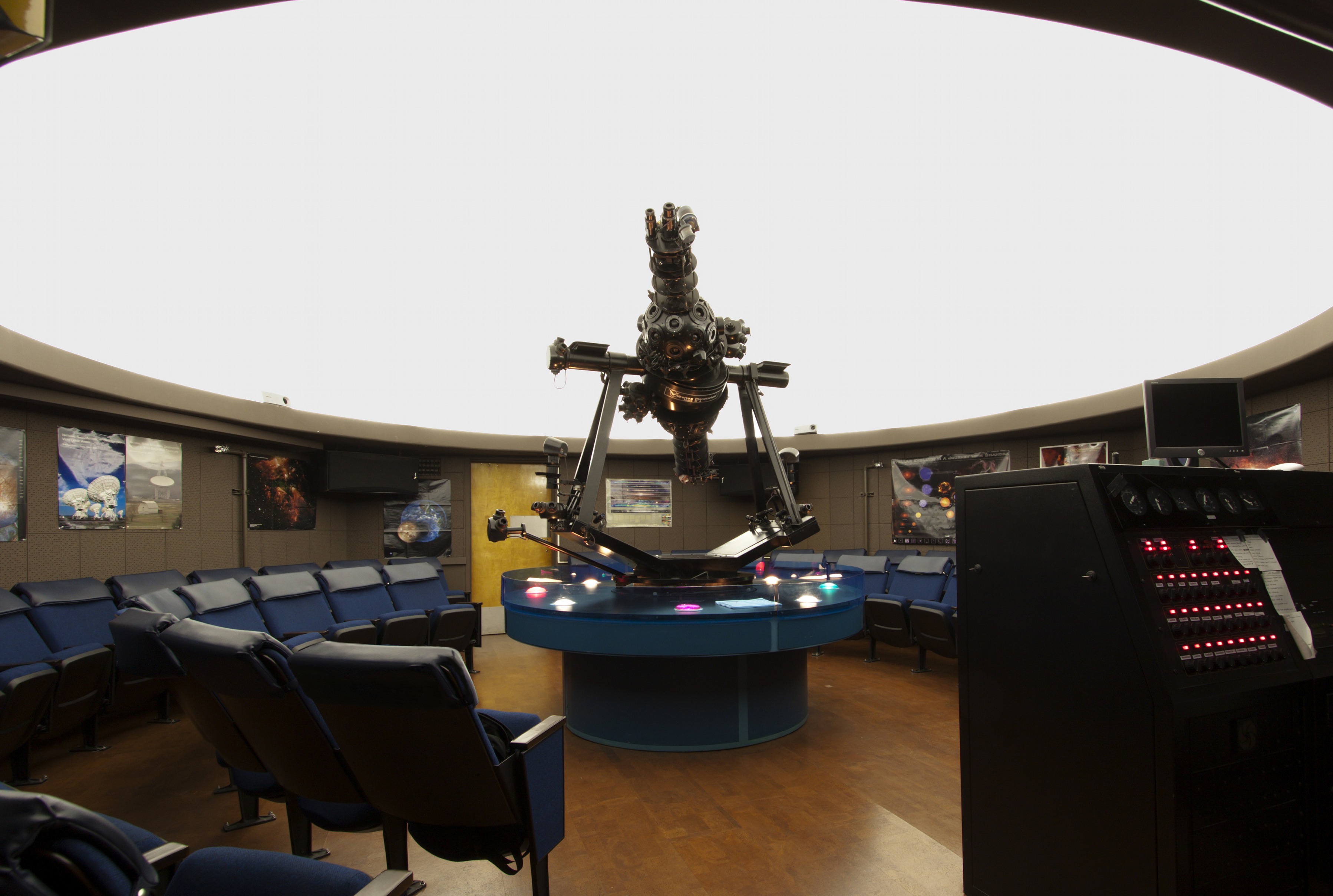
The UCLA Planetarium finished construction in 1957 as part of the Mathematical Sciences Building, and is operated by the UCLA Department of Physics and Astronomy. Over its lifetime, the 24-foot diameter dome has housed three different star projectors (see below). With seating for 49 people, the UCLA Planetarium is a unique and intimate setting for visitors to learn about the universe. The facility offers shows to introductory astronomy classes, the Los Angeles community, and educational groups. Shows are presented primarily by UCLA Astronomy graduate students.
Star Projector
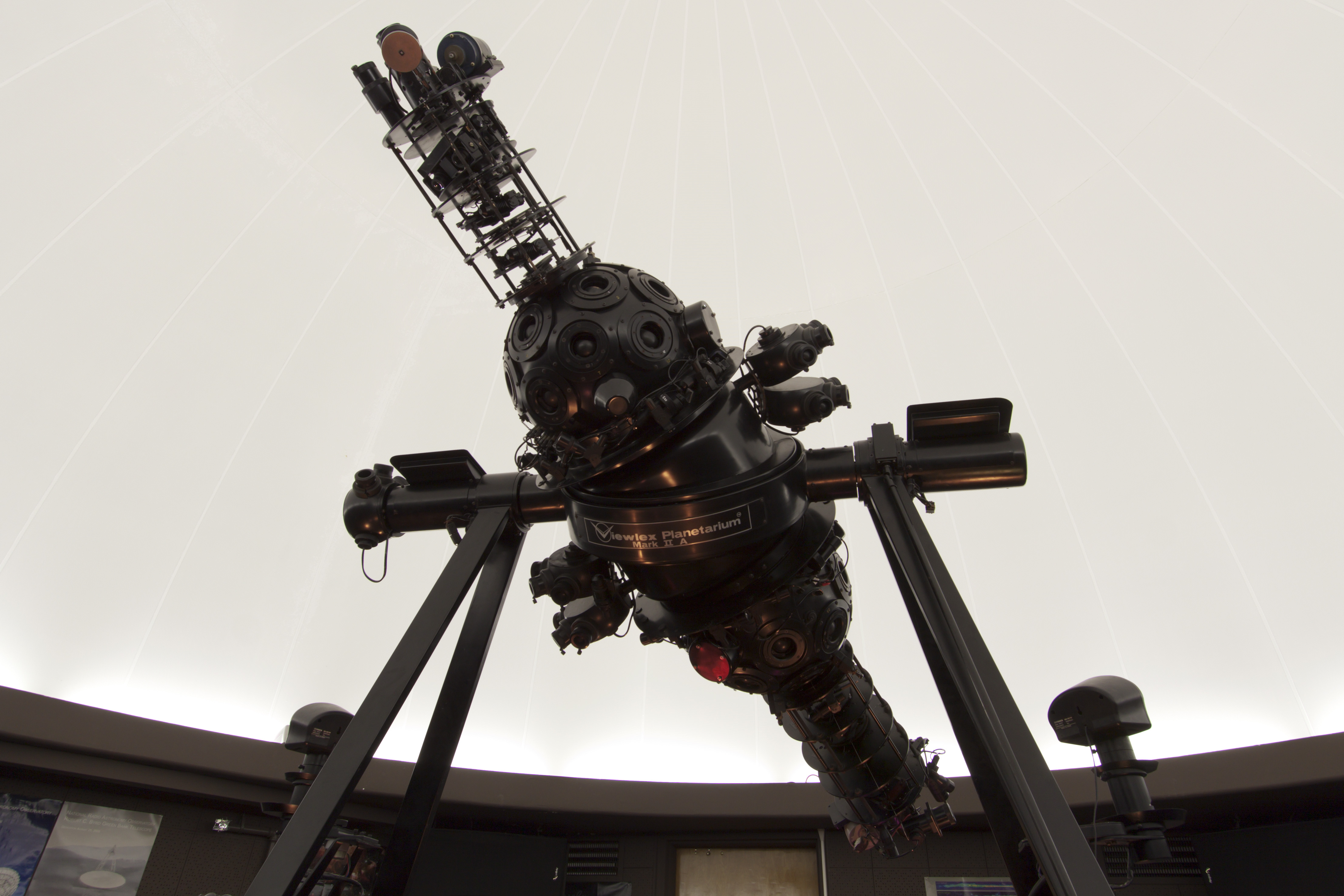
The star projector is at the heart of any planetarium - it is what recreates the night sky on the inside of the planetarium dome. Traditional star projectors, like UCLA’s, use several incandescent light bulbs ranging in brightness from 5 to 500 watts and pinhole screens to produce stars. They also have the usual ‘bug-like’ appearance, and must be located at the center of the planetarium.
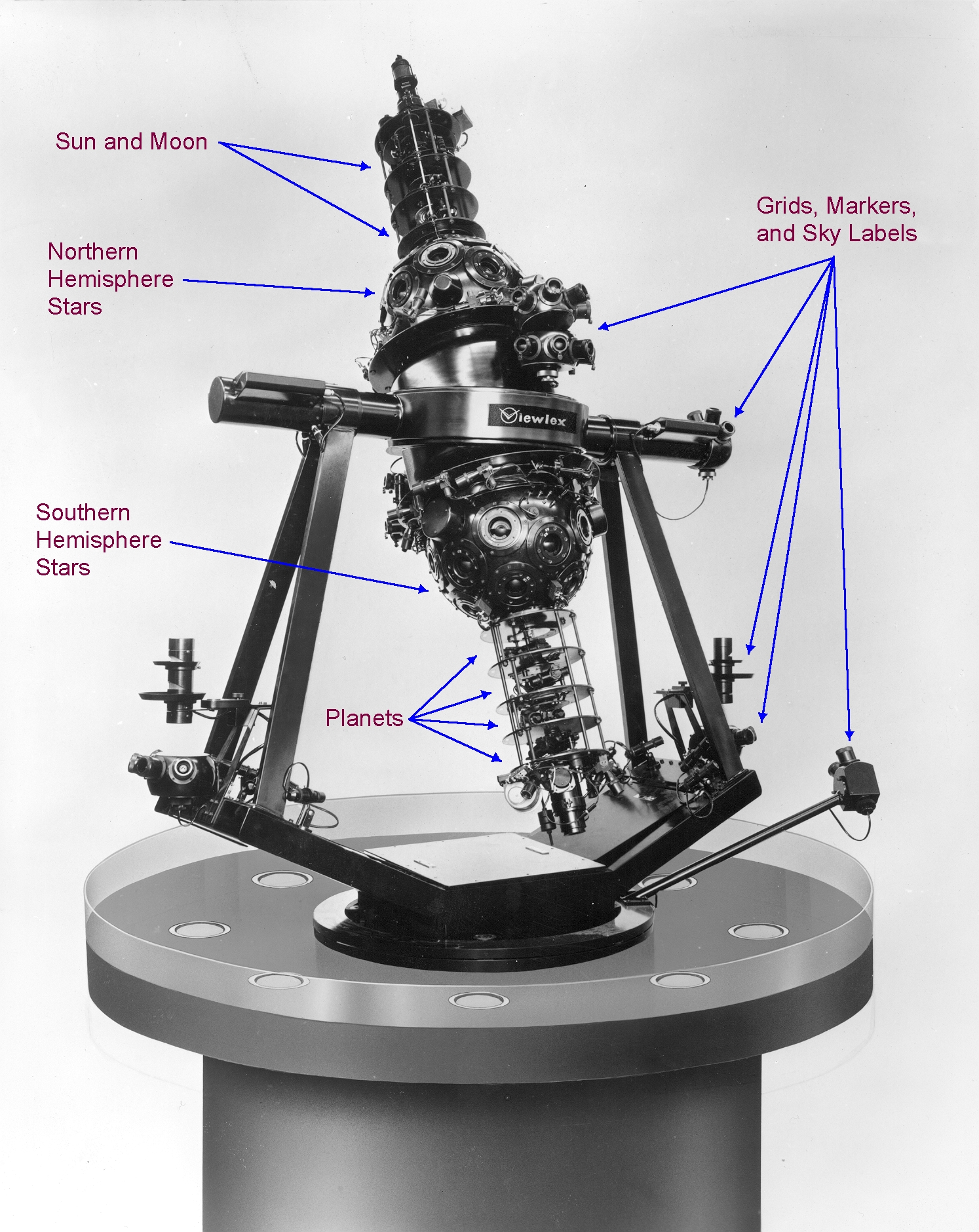
UCLA’s original projector was a Spitz Model A, installed in 1957. In 1965, it was upgraded to a Goto Mercury projector, costing about $8,000 at the time. The current projector, a Viewlex Mark IIA (also known as the Goto GX–10), cost about $35,000 and was installed in 1973. State-of-the-art at the time, the Mark IIA has features such as:
- Full sky coverage of entire celestial sphere
- Projection of about 4,000 stars to 6th magnitude
- Color characteristics of 16 brightest stars recreated - Sirius, Vega, Rigel, Arcturus, Canopus, Alpha Centauri, Capella, Betelgeuse, Achernar, Beta Centauri, Alpha Crucis, Aldebaran, Antares, Spica, Pollux, and Beta Crucis
- Simulated variable stars - Mira, Algol, and Delta Cephei (currently disabled)
- Eight deep sky objects - Andromeda galaxy, Beehive (Praesepe) cluster, large and small Magellenic clouds, Omega Centauri cluster, Orion nebula, and Perseus double cluster
- Milky way projection
- Sun, Moon and Planets (Mercury, Venus, Mars, Jupiter, Saturn) with annual motion
- Lunar Phases
- Two constellation projectors - Orion and Taurus
- Effects - daylight, moonglow, sunrise/sunset glow, morning/evening twilight
- Precession (currently disabled)
- Sky markings - equator, ecliptic, meridian, azimuth, zenith, poles, precession circle, cardinal points
In addition, the UCLA planetarium uses three InFocus IN2104EP digital projectors to add video, animation, image, and text content to its shows. These projectors can be used simultaneously, and each generates an image occupying nearly ⅓ of the dome. Audio from any source is routed through the dome’s four-speaker audio system.
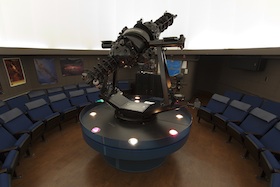
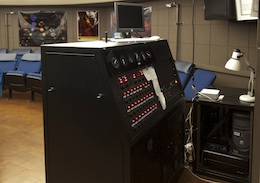
Telescopes
The telescope currently in use for public viewing is a Celestron 14-inch Schmidt-Cassegrain reflector mounted on a Celestron CGE Pro mount and housed on the 9th floor (roof) of the Mathematical Sciences Building. Two Televue eyepieces, 31 mm and 17 mm, provide magnifications of 113 times and 206 times respectively, providing stunning views of craters and mare on the lunar surface, cloud patterns on Jupiter, Saturn’s rings, multiple stars systems, star clusters, nebulae, and galaxies.
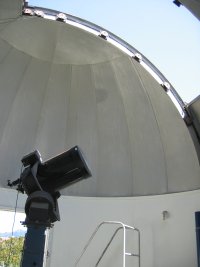
Celestron Donation to UCLA Planetarium & Astronomy Live!
In November 2013, Southern California telescope company Celestron generously donated outstanding new telescope equipment to the UCLA Planetarium and Astronomy Live!, UCLA Astronomy’s outreach group. Included in the donation were a CGE Pro mount and filter wheel for our Celestron 14-inch telescope, which have greatly enhanced our weekly public telescope viewings. A new CGE mount for our Celestron 11-inch telescope and tripods for our solar telescopes have improved use of those scopes for events like Exploring Your Universe. Additionally, a Skyris 274M camera has provided us with fantastic astronomical images.
The UCLA Planetarium and Astronomy Live! are extremely grateful for this donation and thank Celestron for giving back to their local community to help spread appreciation and understanding of our night-sky.
